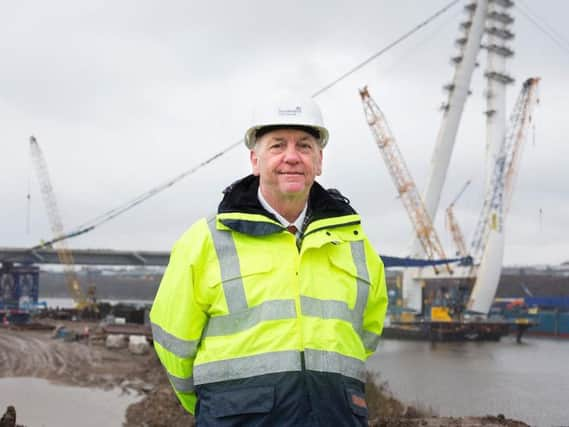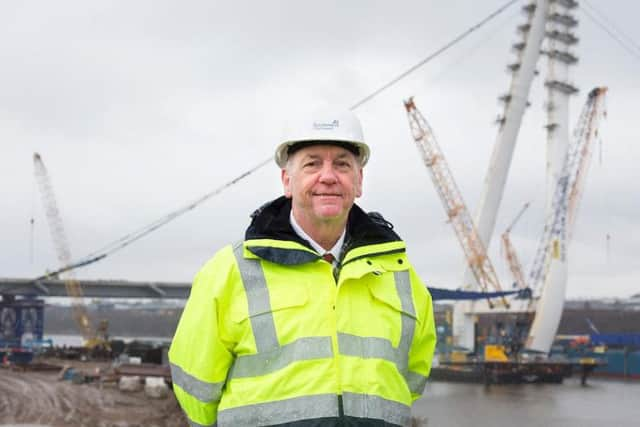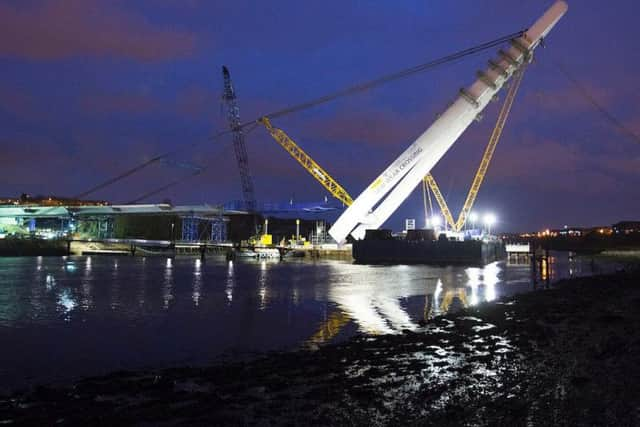Video squeezes New Wear Crossing pylon raising into seconds


The video condenses the 15-and-a-half hour operation into seconds.
Timelapse cameras on the construction site, along with drone and ground filming, captured the slow and steady work to raise the pylon vertically to its final resting position.


Advertisement
Hide AdAdvertisement
Hide AdNothing of this scale – it weighs the equivalent of 125 double decker buses – had been raised in this way since the London Eye was erected in 1999.
The operation - which began at first light on Friday and went on til dusk, then resumnd first thing on Saturday and concluded around 3.30pm - was the culmination of two years of design and planning, and 12 months of fabricating the pylon for Farrans Construction and Victor Buyck Steel Construction, which formed FVB joint venture to deliver the project on behalf of Sunderland City Council.
Council leader Coun Paul Watson said finally seeing the pylon in place was a huge moment for him personally and the people of the city: "You can use your imagination, and you can look at countless photographs and impressions, but nothing can really prepare you for what the centrepiece looks like over the river.
"Seeing the pylon raised into position, standing high above the River Wear, makes me feel very proud. It also gives us a real indication of the impact this bridge is going to have on Sunderland."


Advertisement
Hide AdAdvertisement
Hide AdStanding at twice the height of Nelson’s Column and bigger than Big Ben’s clock tower, the centrepiece will be visible from some considerable distance on both sides of the river, as well as from the A19.
The new bridge will link Castletown to the north of the River Wear with Pallion to the south, and will enhance public transport, as well as significantly improve the important transport links to the city centre and Port of Sunderland from the A19 and A1.